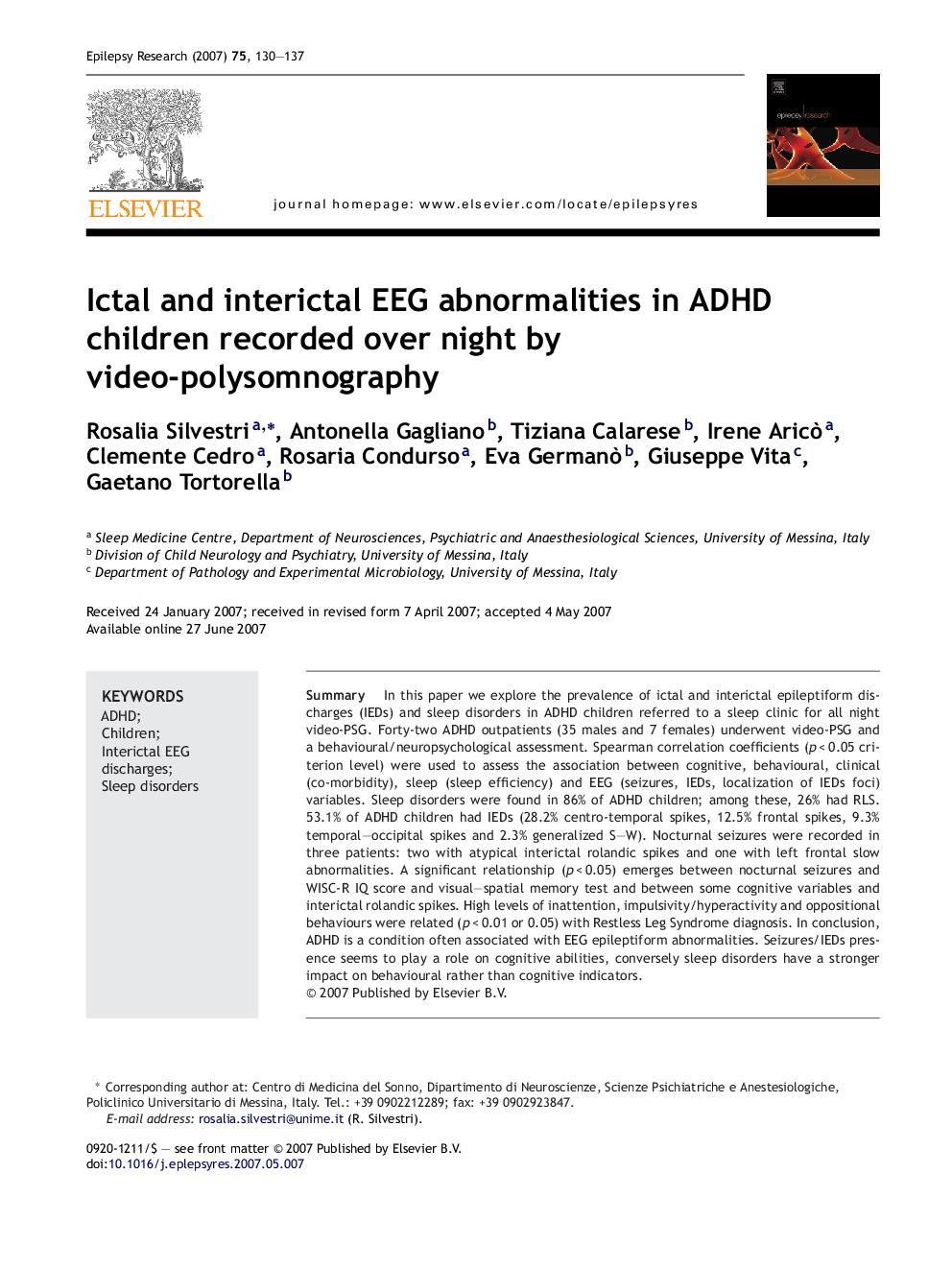| Article ID | Journal | Published Year | Pages | File Type |
|---|---|---|---|---|
| 3053049 | Epilepsy Research | 2007 | 8 Pages |
SummaryIn this paper we explore the prevalence of ictal and interictal epileptiform discharges (IEDs) and sleep disorders in ADHD children referred to a sleep clinic for all night video-PSG. Forty-two ADHD outpatients (35 males and 7 females) underwent video-PSG and a behavioural/neuropsychological assessment. Spearman correlation coefficients (p < 0.05 criterion level) were used to assess the association between cognitive, behavioural, clinical (co-morbidity), sleep (sleep efficiency) and EEG (seizures, IEDs, localization of IEDs foci) variables. Sleep disorders were found in 86% of ADHD children; among these, 26% had RLS. 53.1% of ADHD children had IEDs (28.2% centro-temporal spikes, 12.5% frontal spikes, 9.3% temporal–occipital spikes and 2.3% generalized S–W). Nocturnal seizures were recorded in three patients: two with atypical interictal rolandic spikes and one with left frontal slow abnormalities. A significant relationship (p < 0.05) emerges between nocturnal seizures and WISC-R IQ score and visual–spatial memory test and between some cognitive variables and interictal rolandic spikes. High levels of inattention, impulsivity/hyperactivity and oppositional behaviours were related (p < 0.01 or 0.05) with Restless Leg Syndrome diagnosis. In conclusion, ADHD is a condition often associated with EEG epileptiform abnormalities. Seizures/IEDs presence seems to play a role on cognitive abilities, conversely sleep disorders have a stronger impact on behavioural rather than cognitive indicators.
